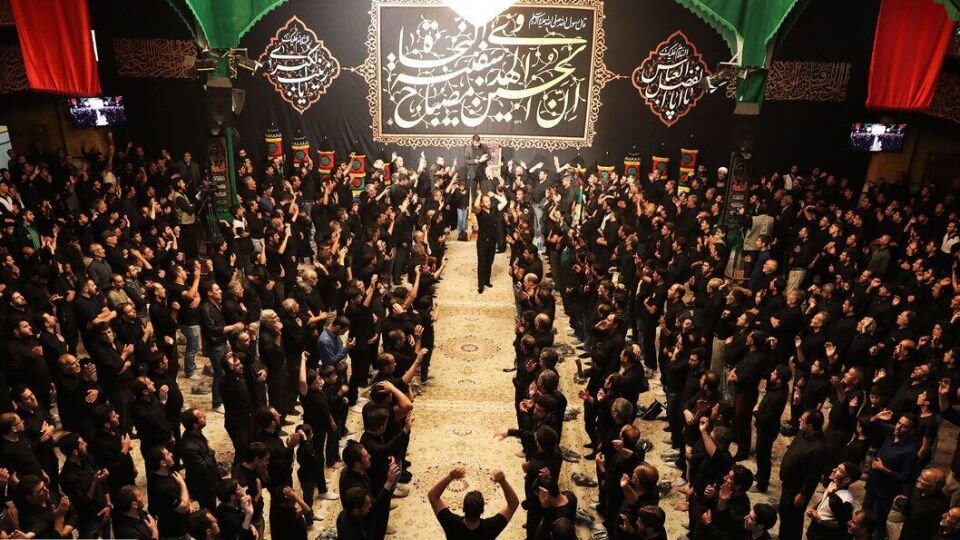Ashura is integral part of Iranian identity

TEHRAN - Muharram’s mourning ceremonies highlight the deep relationship between the Iranian identity and the martyrdom of Imam Hussein (AS).
Imam Hussein (AS) was martyred in the Battle of Karbala on October 10, 680 (Muharram 10, 61 AH), nearly 14 centuries ago. However, his martyrdom has never been forgotten or marginalized in Iranians’ daily life, rather it lived on through centuries and played a major role in mobilizing the oppressed people against corrupt rulers who trampled on the people’s rights.
This was on full display in the Islamic revolution of Iran, which led to the downfall of Mohammad Reza shah in 1979. In a speech delivered in June 1963, Imam Khomeini, the then-leader of the revolution, compared the Shah to Yazid, the Umayyad caliph who was responsible for the martyrdom of Imam Hussein (AS) and his companions in the plain of Karbala. The Shah was widely seen as ‘Yazid of the time’ afterward, which severely undermined the legitimacy of his government and ultimately led to its overthrow. Imam Hussein’s slogan “never to humiliation” became the motto of the revolution.
Imam Khomeini said in the speech, “Today is the evening of Ashura… sometimes when I ponder on the Ashura day’s events, I wonder why the Umayyads and the government of Yazid ibn Mu'awiya brutally and inhumanely treated the defenseless women and innocent children on the day of Ashura if they were at war with Hussein alone? In my opinion, they were opposed to them totally. The Umayyads and the government of Yazid were opposed to the household of the Prophet. They did not like Bani Hashim, and their goal was to destroy this blessed tree. This question also applies to the current situation. If the tyrannical regime of Iran was at war with the Maraji and was opposed to the Islamic scholars, why did they oppose the Quran, why did they attack the Faizieh school, what did they want from the students of religious sciences? What did they want from our 18-year-old Seyed, what did our 18-year-old Seyed do to the Shah? What had he done to the government? What had he done to the tyrannical regime? So we come to the conclusion that they are basically opposed to [Islam], they are against the basis of Islam and the clergymen.”
After the revolution, the Ashura uprising continued to be a guiding principle for the new establishment. It was also the driving force behind Iran’s resistance against Saddam Hussein’s war on Iran in the 1980s.
Imam Khomeini said that the victory of the Islamic revolution was because of Imam Hussein’s uprising.
“We all should understand that if it had not been for the uprising of Imam Hussein (AS), we would not have won. The Islamic Revolution of Iran is a reflection of Ashura and its great divine revolution,” he stated.
He also said that the mourning ceremonies for Imam Hussein (AS) played a major role in unifying the Iranian people against the Shah.
In Imam Khomeini's view, the martyrdom of Imam Hussein (AS), who is also known as the master of martyrs, is the main reason that preserved the Muslim countries.
“We have to see what the secret of the survival of this religion and the survival of Muslim and Shiite countries is. And we should protect that secret. The biggest secret in this regard is the issue of the master of martyrs,” the late Leader said.
Under Ayatollah Seyed Ali Khamenei, the Leader of the Islamic Revolution, Iran continued to follow in Imam Hussein’s footsteps.
“Today, fortunately, the Iranian nation has learned this lesson from Hussein ibn Ali. For thirty years, the majority of the Iranian nation has been moving in this direction. There have been some few people who didn’t move in this direction, but the majority of the Iranian nation follows in Hussein ibn Ali’s footsteps,” Ayatollah Khamenei said on June 12, 2013. He said on many occasions that the Islamic Republic is moving in the direction of Imam Hussein (AS).
Imam Hussein’s martyrdom is not only a source of inspiration for the Islamic Republic, but it also became an integral part of the Iranian culture. During the first 10 days of Muharram, cities all over Iran are filled with black banners and posters in memory of Imam Hussein (AS), and people gather at mosques and other religious centers to mourn and cry while eulogists recite poems glorifying the martyrdom the Imam. This year, the mourning ceremonies are being held in open areas to reduce the risk of contracting the novel coronavirus. These ceremonies are of great importance for people from all walks of life. And they are also a show of solidarity in the face of U.S. pressure on Iran, which seeks to drive a wedge between the establishment and the people.
“The legacy of Hussein is still invoked as a source of strength when Iranians face insurmountable challenges, such as threats of war,” said a National Interest article published on August 29, 2019.
The article added, “The epic of Karbala is ultimately a legacy of resistance against injustice, with a central hero that is easy to revere for his repudiation of tyranny. Hussein’s moment of sacrifice immortalized him. The power of this imagery is crucial to recognize in any analysis that considers the costs of war with Iran.”
People and governments in Iran are deeply indebted to Imam Hussein whose martyrdom created a long-lasting unity among them that protected Iran at many critical junctures during the past few centuries. This unity still exists and could be further strengthened due to foreign pressures.
Leave a Comment